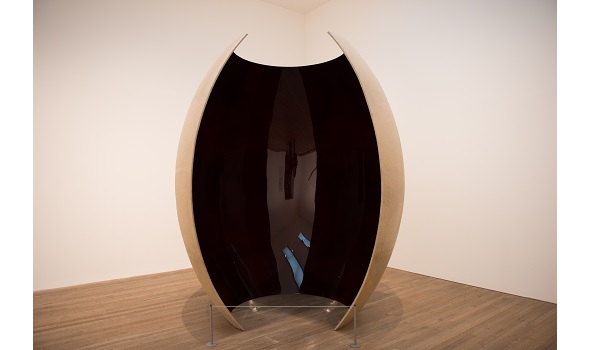‘I thank Duchamp for making me migrate’: Migration trail at the Tate Modern
‘I thank Duchamp for making me migrate’: Migration trail at the Tate Modern

As a Polish-origin teenager in the United States, Camille Gajewski-Richards often dreamed of escaping back to an idealised ‘old world’ brimming with urbane, colourful characters like artist Sonia Delaunay, a world her own parents had fled in the 1980s.
“The Europe I envisioned was an antidote to the drab realities of the Soviet Bloc and American suburbia,” she recalls. “It often took the form of London, or Paris, and characters like Delaunay.”
So Camille, who now works at the Tate Modern in London, was surprised to learn that Delaunay was herself an immigrant.
“Little did I know that Sonia Delaunay was born Sonia Illinitchna Stern to a Jewish family in Ukraine. The cosmopolitan image I’d marvelled at had a migrant identity at its core, and learning this changed the way I saw her work, and her persona—and helped me come to terms with my own.”
This story of how migrants often end up as integrated, successful members of their new society – even as exemplars of that society – is revealed in a fascinating initiative by Tate Modern, the country’s most visited tourist attraction (almost 5.9 million people in 2018).
“Migration is a prevalent theme throughout the artworks on display,” we read in an introduction to the initiative on the Tate website. “Artists either address it directly, or we can bring it to a work through our own interpretations.”
That was the thinking behind the new migration trail, which takes visitors through a series of artworks about migration or by migrants. It also offers an online tour of illustrations of paintings and sculptures with accompanying comments by the artists of Tate staff members.
Along with Camille Gajewski-Richards, contributors include Achim Borchardt-Hume, who was born in Germany, lived in Rome, settled in London; Alketa Xhafa Mripa, a London-based refugee from Kosova; Cina Aissa, French Tunisian, working in London; Michael Raymond, an ex-member of Student Action for Refugees (STAR) in Sheffield; William Dante Deacon, from Australia.
The work on which they comment covers an array of topics, including colonial migrants and the damage they wrought, the Mexico-US border, and the British Library, which inspired a piece by Yinka Shonibare showing hundreds of books with the names of people with direct experience of or involvement in the discussion around migration on their spines.
Others are chosen by Tate staff for the connection to their own experience, including an egg-like sculpture by Anish Kapoor.
“Speaking about Anish Kapoor as an artist who wasn’t born in Britain but came here to study and made London his home, brings me back to my own journey,” writes Alketa Xhafa Mripa.
Ryan Lanji writes powerfully about Marcel Duchamp’s famous urinal (“The Fountain”), and credits Duchamp for his own decision to migrate.
“I used to stare at … something the art world called one of the most significant works of the 20th century and what people around the world considered to be simply a urinal.
“Every time I look at it, it inspires me to turn what I think on its head and look for the other side. Maybe that’s what our forefathers did – search for a new meaning on the other side of our world. I thank Duchamp for making me migrate.”
The online tour can be accessed here. The physical walkthrough starts on Level 2 of Tate Modern, Bankside, London, SE1 9TG.
TOP IMAGE: Ishi's Light, Anish Kapoor by ThalesEGO, Flickr (CC BY NC-ND-2.0)


